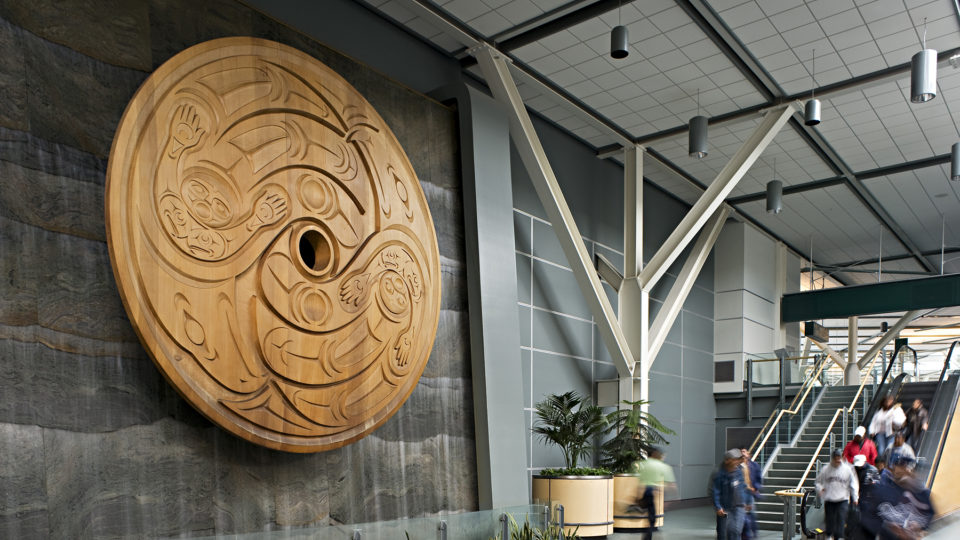- Strengthen Participation Of Indigenous Peoples And Partnerships With Communities
- Invest In, And Protect, Our Working Forest Land Base
- Have Smart Rules That Protect The Environment And Encourage Investment
- Double Down On Market And Product Diversification
- Be the global hub for expertise in low-carbon, GREEN building

Strengthen Participation Of Indigenous Peoples And Partnerships With Communities Investment
140 communities in B.C. depend on forestry, and relationships with communities and First Nations are critical for our industry’s success.
We live, work, and play in the communities in which we operate, and we generally enjoy strong support for the sector with 79% of British Columbians holding a favourable view of producers of lumber, pulp and paper, and wood products.* That’s not to say things are perfect. Like neighbours, there are always things we can do to improve relationships and we are committed to doing just that.
The forest sector has built many respectful and mutually beneficial relationships with First Nations and Indigenous-owned businesses. Today, 9% of the forestry workforce in B.C. is Indigenous, a greater rate of employment than in any other natural resource sector in B.C. We recognize that some First Nations aspire to have greater participation in the sector and we also see more opportunities to partner and to attract new Indigenous workers to the sector.
Indigenous and local communities should share in the stumpage revenues generated by forest sector activity creating opportunities for increased participation in the sector.
Industry can do more to encourage further First Nations involvement in the industry – not just as employees, but as owners and manufacturers too.
What all communities want is more stability. To achieve this, it means ensuring that companies operating in the sector – whether they are large or small – can access fibre at a reasonable cost to keep facilities running, or to commit to new investments.
Finally, while the industry may be smaller, there will still be thousands of well-paid jobs to fill in the decades ahead. We need to support our next generation of forestry professionals, ensuring they have the resources they need to get the skills and knowledge our industry depends on.\
CHOICES FOR A BETTER FUTURE:
Enhance partnerships
- Obtain federal support for workers and communities in transition.
- Increase revenue sharing to direct 40% of stumpage revenue to support local communities and First Nations. This revenue will create means for First Nations to increase direct participation in the industry and will support community initiatives.
- Increase community forest agreements and First Nations woodlands licences in areas directly adjacent to communities, to allow for greater local management, protect communities from wildfires, and provide fibre to local manufacturers.
- Convene annual regional forestry summits to review long term planning and assess opportunities.
- Set targets and track progress annually to increase Indigenous participation in forest sector employment, contracting, and business ownership.
Ready the workforce
- Invest in skills training programs to ready our current workforce for industry’s future needs.
- Enhance the joint industry/provincial funding of the next phases of the Industrial Wood Processing Program at BCIT. Upcoming modules, including The Business of Sawmilling, Advanced Manufacturing and Value-Added Lumber Products, will support the development of knowledge and technical skills development.
- Expand industry’s Forest Education Program to all regions of B.C. This program provides students with information about the forest sector and sustainable forest management, as well as hands-on experience through the Natural Resource Management camps and Women in Trades program.
- Create a searchable inventory of industry-related forest training, scholarships, and bursaries to support the next generation of forestry practitioners in B.C.
- Build a “shelf-ready” forest education module for primary and secondary educators to use in the classroom.

